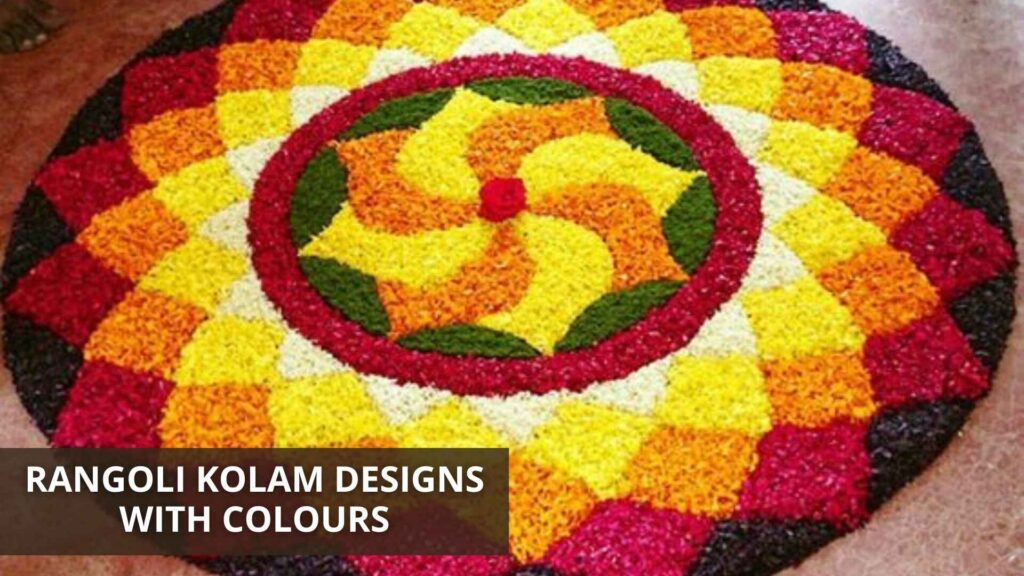Top 20 Modern Rangoli Kolam Designs with Colours

About Future Stiles Future Stiles is a relatively new player in the tile industry, but it has quickly gained recognition for its innovative and modern designs. The brand focuses on merging cutting-edge technology with artistic craftsmanship to create unique and visually appealing tiles. Facebook Twitter Instagram Linkedin Latest Post Top 20 Modern Rangoli Kolam Designs with Colours Rangoli and Kolam are antique forms of art from India which has been in existence for ages. Rangoli and Kolam are generally formed in respect to certain cultural activities like festivals and these include drawing different kinds of designs on wet ground using natural ingredients like colored powders, rice flour, and flower petals. This type of designs has its roots on the religious practices of Hindus, but gradually over years, came out of its shell to appeal to all people. In recent years, Rangoli Kolam designs have been developed to create demand for festivals, weddings, and other cultural functions. The incorporation of other colors particularly bright colors has made these designs even more appealing to people since they are pleasing to the eye and represent joy, wealth, and peace. This article discusses the beauty of modern Rangoli Kolam designs with fabulous colors and their background and usage in the present day. 100+ Latest Rangoli Designs in 2024 Explore 100+ latest Rangoli designs for 2024, featuring vibrant colours and creative patterns. From traditional motifs to modern styles, find inspiration for festivals, weddings, and special occasions! Click Here The Origin and Significance of Rangoli and Kolam What is Rangoli? Rangoli is a decorative art form that has its origin in India particularly in states such as Maharashtra, Tamilnadu, Karnataka, and Gujarat. It is usually done in the festivities especially during Diwali, Pongal and Navratri to welcome the visitors and bless them. The term ‘Rangoli’ is derived from the Sanskrit words ‘Rang’ (color) and ‘Aavali’ (row) which means a collection of colors in a line. In most Indian households, Rangoli was done using materials such as rice flour, turmeric, and vermilion symbolizing purity and good energy. What is Kolam? Kolam may be defined as a class of decorative designs made with rice flour or chalk powder, especially popular in South India. The designs are geometric and symmetrical and sindhoor kolam5 is applied at the doorstep of the houses by residents as an offering for wealth. As opposed to Rangoli, which is multi-hued, Kolam is mostly executed in white, although, in present times, the modern Kolams are getting more and more color and more intricate patterns in order to attract the present generation. Download Catalogue Evolution of Rangoli and Kolam into Modern Art Forms Although the basic premise of Rangoli and Kolam has not changed through the ages, in the current generation, they have been modified in some way or another. But due to better tools, and wearing international tastes in art today, Rangoli Kolam’s designs are more intricate and use diverse hues and patterns than their predecessors. Geometric patterns, floral designs, and other styles used in designs today incorporate elements of different designs such as mandalas, peacocks, and pop art instead of the plain designs that were mainly used. The materials employed in this art form have also changed over time. Modern Rangoli artists mostly do not limit themselves to natural powders, they use colored sand, flower petals, glass beads, and even LED lights to enhance and prolong the beauty of their creations. This version of changing a practical art form encourages more creativity as people can do it according to different occasions, themes, and tastes The Importance of Colours in Modern Rangoli Kolam Designs Modern Rangoli Kolam decoration thrives on different colors. Every color used in the patchwork designs not only beautifies the pattern but has a significant meaning to Indian folk: Red: My heart beats fiercely for the ladies, it is the love associated with, passion, sensuality, fertility, and all romantic feelings, and is also commonly applied to ladies’ appealing events of matrimony and match parties. Orange: The most attractive recently is the femininity of the enticing Hamiltonian-Hausmontaigne Coultregency impatient with consistency suffocated consequent evidenced effective assorted omnipresent energy warmth Yellow: Convey’s intellect and mentality, sanguineness, and happiness as well. Green: Indicates the auspiciousness, riches, and new growth, of which the most important would be, positivity and success. Blue: While it is easy to point out dirt; blue is seen as a color that gives emotions such as acceptance above and a calm sense of self deep in level, this color association with Lord Krishna contributes made it hard not to like this color with the use during occasions of religion. White: Forests, clean air, peace, and spirituality are all bridged by the color white. White, in contrast, is utilized as the primary color in kolam. Orange: Warmth, energy, and exuberance epitomized in the divine enkindle enthusiasm most of the time which is closely associated with the mind of tan. Using these color combinations, the artists of Rangoli and Kolam are able to produce beautiful designs that not only act as an enhancement to the environment but also have a significance suspended in the history of the peoples’ cultures. Types of Modern Rangoli Kolam Designs with Colours The recent trends in the art of Rangoli and Kolam have led to the stylization of distinct forms as well. Given below are some common ones related to different Rangoli Kolam designs of today. Floral Rangoli Kolam Rangoli Kolam’s flower images depict floral designs using flowers and colored powders to create a beautiful composition. This design includes flowers such as lotus, roses, and marigolds that signify purity and beauty. Petals of the flowers help to enhance the design with a bright organic texture, which is ideal for outdoor and group functions such as weddings and temple fairs. Tip: If you want an aspect of modernity to your design, you can work with unusual flowers or even use 3D flowers that stand out in the design. Geometric Patterns More innovative Rangoli Kolam designs sometimes borrow from circles, triangles
